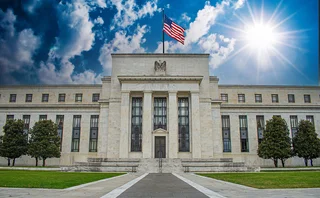
Multi-factor forward curve models for energy risk management
In the second article of this series, Carlos Blanco and Michael Pierce introduce the most common multi-factor models of the forward curve used for energy derivatives pricing and risk measurement

In energy markets, forward price changes over time are largely determined by new information regarding the expected average spot price during a future delivery window, and therefore their behaviour is substantially different from that exhibited by spot prices, which immediately react to short-term changes in the physical market.
Click here for a full version of this article in PDF format, which
Only users who have a paid subscription or are part of a corporate subscription are able to print or copy content.
To access these options, along with all other subscription benefits, please contact info@risk.net or view our subscription options here: http://subscriptions.risk.net/subscribe
You are currently unable to print this content. Please contact info@risk.net to find out more.
You are currently unable to copy this content. Please contact info@risk.net to find out more.
Copyright Infopro Digital Limited. All rights reserved.
As outlined in our terms and conditions, https://www.infopro-digital.com/terms-and-conditions/subscriptions/ (point 2.4), printing is limited to a single copy.
If you would like to purchase additional rights please email info@risk.net
Copyright Infopro Digital Limited. All rights reserved.
You may share this content using our article tools. As outlined in our terms and conditions, https://www.infopro-digital.com/terms-and-conditions/subscriptions/ (clause 2.4), an Authorised User may only make one copy of the materials for their own personal use. You must also comply with the restrictions in clause 2.5.
If you would like to purchase additional rights please email info@risk.net
More on Risk management
12 angry members: why dissent is growing on the FOMC
Hardening views on wisdom of further cuts mean committee’s next meeting is unlikely to be harmonious
LSEG streamlines post-trade efficiency across cleared and uncleared markets
LSEG’s Post Trade Solutions extends clearing-style efficiencies to bilateral markets, helping Apac clients navigate rising margin and risk management pressures
Squashing CVA still dominates XVA desks’ priorities
Dealers favour options-based strategies to manage charges; some explore contingent CDSs amid rising exposures
EU single portal faces battle to unify cyber incident reporting
Digital omnibus package accused of lacking ambition to truly streamline notification requirements
XVA desks prioritise core tech upgrades over AI
Vendor upgrades, cloud-native rebuilds and sensitivities tooling dominate 2026 budget road maps
Chicago data centre outage forced clearers to turn away clients
Friday’s cooling system failure highlights cracks in tech and concentration risk of big CCPs
LCH goes live with agency model for client clearing
English law version of FCM-style European trust model approved, as Eurex lags behind
US banks hoping for end of DFAST global market shock
As Fed consults on stress-test reform, lobby group argues regulator is double-counting market risk








